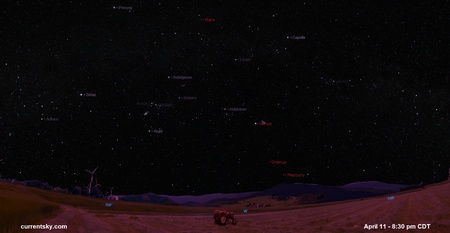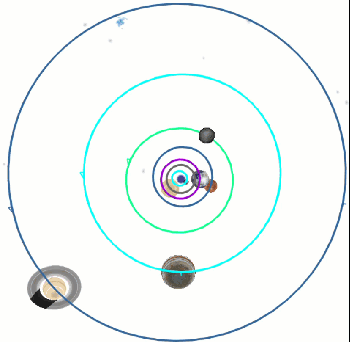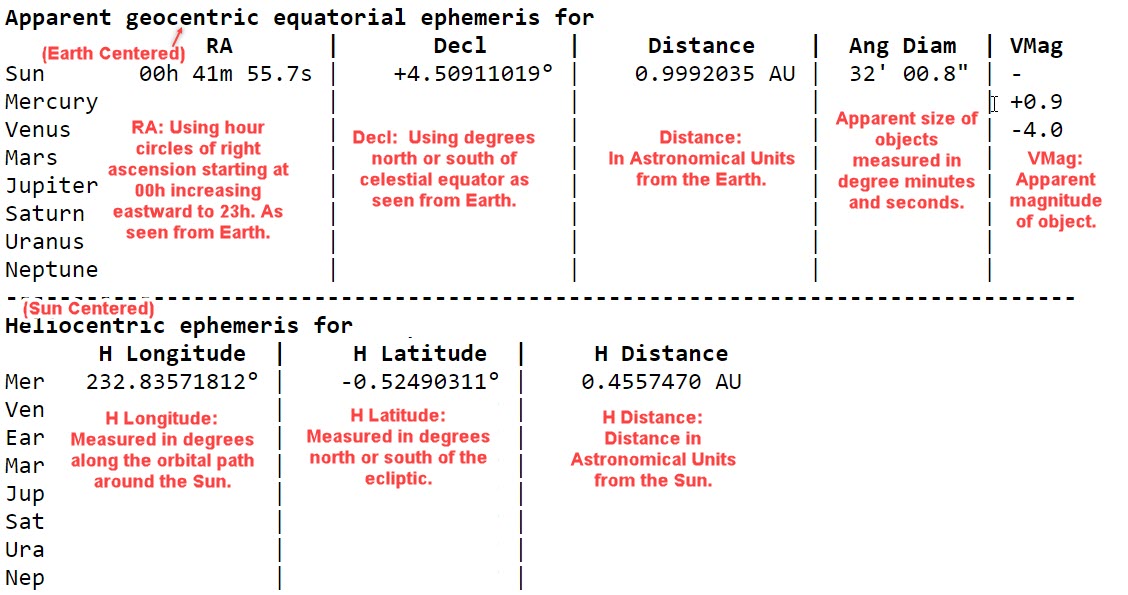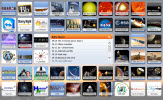April 2023
This month there is an unusual type of solar eclipse known as a Hybrid Solar Eclipse, a combination of an annular and a total solar eclipse. This eclipse starts as an annular solar eclipse, then at mid-way through the eclipse it becomes a total eclipse, and toward the end of the eclipse it will again be an annular eclipse. The eclipse path takes the Moon's shadow across the south Pacific and parts of the Philippines, Australia, New Zealand, Samoa, and Southeast Asia.
Click here for the month at a glance calendar.

What is this? "It's a prediction of when Lees Summit, MO, will have good weather for astronomical observing." Click on the graphic to go to the Clear Sky web site.

Mercury reaches its greatest eastern elongation toward the middle of this month and for about the first two weeks will be well placed for viewing over the western horizon after sunset local time.
Venus continues shining brightly over the western horizon at sunset local time.
Mars is high above the southwestern horizon at sunset and will be found near the 'Twin Stars' of Gemini, Pollux and Castor. As the distance between Mars and the Earth continues to increase the apparent magnitude of Mars decreases.
Dwarf Planet Ceres stays too dim for naked-eye viewing with an apparent magnitude greater than 6.0, but could be followed with optical assistance as it traverses the constellation area of Leo the Lion.
Jupiter reaches solar conjunction this month and will not be visible until later next month as a morning planet rising ahead of the Sun.
Saturn rises ahead of the Sun and is slowly but steadily becoming more visible as a morning planet as the separation between the Sun and Saturn continues to increase.
Uranus is too close to the Sun to be easily viewed and will be at solar conjunction next month before reappearing in the morning skies.












